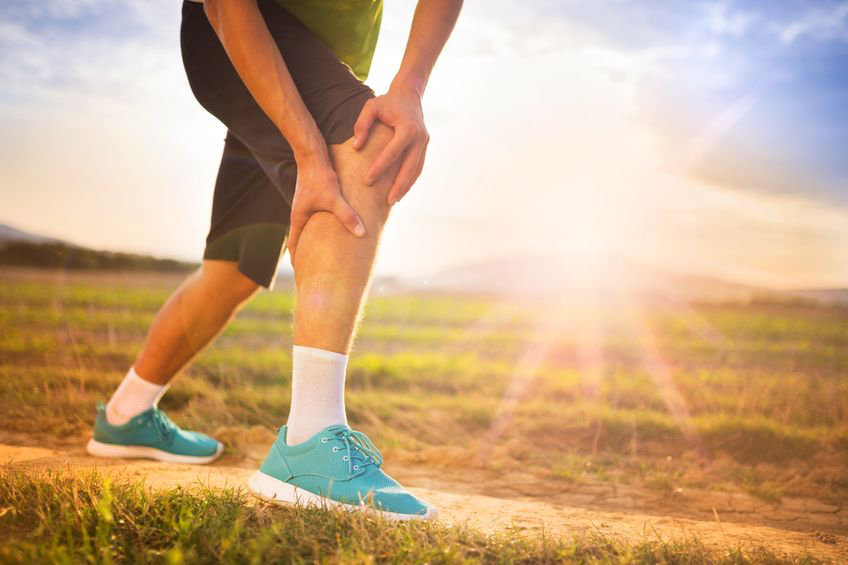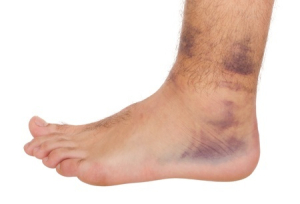 Sprains and strains are two of the most common musculoskeletal problems. I see them all the time. In fact, a good portion of my day is spent diagnosing, treating…..and often explaining the difference between these terms.
Sprains and strains are two of the most common musculoskeletal problems. I see them all the time. In fact, a good portion of my day is spent diagnosing, treating…..and often explaining the difference between these terms.
What Are Sprains?
Sprains are ligament injuries. Ligaments are thick strong bands that connect and stabilize a joint. Usually sprains occur when the ligament gets stretched. Common sites for sprains are the AC joint of the shoulder, the elbow, the knee and most commonly the ankle.
What Are Strains?
When we talk about strains, we usually are referring to a muscle injury. They are, in fact, tears of the muscle. You probably know them as “pulled muscles”. Usually these injuries occur at or near the junction of the muscle and its tendon. Occasionally, there is also an injury to the tendon or to the tendon alone. These are very common.
Most of us have experienced these at one time or another. They typically occur when we either over-use a muscle or use it in a manner that it is not accustomed to or not prepared for. Common locations for muscle strains are the quadricep’s muscles (front thigh muscles), the hamstring muscles (back upper leg muscles) or the calf muscles.
Although sprains and strains describe injuries to different structures, the symptoms, treatment and recovery of these two types of injuries are similar
Symptoms
Typically there is an abrupt onset of pain. (BTW, If you get pain in your muscles the day after exercise, that’s probably not a strain but rather an entity termed Delayed Onset Muscle Soreness (DOMS)). Occasionally there is a “pop”. This is usually followed by pain, local tenderness and difficulty using the injured body part.
Depending on the severity of the injury, swelling and “black and blue” discoloration may also develop. There may be subtle deformity but if the deformity is significant, that may mean that the muscle’s tendon was pulled from the bone. If you notice this, you should see your doctor and get this checked out.
Treatment
Increased swelling and reduced use of the injured structure can lead to progressive pain, stiffness and a prolonged recovery. Conversely, too much activity can also lead to increased swelling and pain and a delayed recovery, as well. In essence, treatment is a balance between too much and too little. For me, the initial treatment is geared to keeping swelling away as much as possible. If we can accomplish that, the pain and stiffness is usually reduced and therefore more easily managed. As a result, the recovery is usually quicker.
Initial and Recovery
Initial Treatment: RICE (Rest, Ice, Compression and Elevation) can help reduce the development of swelling. Tylenol is usually sufficient for controlling pain. Anti-inflammatories are, by definition, designed to reduce inflammation and its’ associated swelling (edema). But these medications also can increase bleeding, which can increase swelling. As a result, I will not usually recommend these medications initially. Aggressive motion activities may likewise increase swelling and, particularly in muscle strains, even result in further tissue damage. Therefore, these should be avoided in this early stage, as well.
Recovery Treatment: After the initial swelling, stiffness and pain stabilize, usually after 48-72 hours, it is often best to move on to “recovery” treatment – that is to initiate motion and rehabilitation. For muscle strains, as the injured tissue heals, it typically heals with scar-like tissue. This tissue is often weaker and less flexible than the uninjured structure and therefore is susceptible to re-injury. Similarly, joint flexibility, balance and our awareness of how the joint is functioning, as well as its position in space (proprioception), are often impaired following a strain or sprain. These deficits also can lead to an increase in a recurrence of your injury.
Physical Therapy
For these reasons, I will often recommend a rehabilitation program after muscle strains and ligament sprains. The purpose of this is to maximize range of motion, strength and endurance in order to restore safe and proper function. By doing so, not only do I hope to optimize your abilities but hopefully reduce injury recurrence, as well.
Ice or heat?
Ice serves two functions. It can numb the painful area, which obviously is very helpful early on…and it can help reduce swelling. It does come at a cost, however. Ice reduces swelling by reducing blood flow. Less blood flow, can impair healing. Heat, on the other hand, increases blood flow. This is great for loosening up “tight” muscles and “relaxing” stiff joints. By increasing blood flow to the area, heat may also aid in tissue recovery…but it can also increase swelling.
So when to use ice and when to use heat depends on the goals at that time and the tradeoffs between the modalities’ pluses and minuses. In short, ice is typically used in the initial treatment and heat is added later. In these later stages, ice may still be needed to help reduce any “new” swelling that can occur when increasing your activities.
Recovery
Ice serves two functions. It can numb the painful area, which obviously is very helpful early on…and it can help reduce swelling. It does come at a cost, however. Ice reduces swelling by reducing blood flow. Less blood flow, can impair healing. Heat, on the other hand, increases blood flow. This is great for loosening up “tight” muscles and “relaxing” stiff joints. By increasing blood flow to the area, heat may also aid in tissue recovery…but it can also increase swelling.
So when to use ice and when to use heat depends on the goals at that time and the tradeoffs between the modalities’ pluses and minuses. In short, ice is typically used in the initial treatment and heat is added later. In these later stages, ice may still be needed to help reduce any “new” swelling that can occur when increasing your activities.
Usually, the initial symptoms settle down within 2-6 weeks. The ultimate functional recovery may take weeks and in some cases, even months more. During that time, progressive increases in activity that do not significantly increase symptoms is permitted and recommended. No worry if pain and swelling increases some. That’s expected…Ice, rest and then get back to it. Once again, progressing your activities slowly as you’re able.
Ligament sprains and muscle strains are common injuries. They usually recover with simple treatment. Rarely is surgery required. If however, you are unsure of the diagnosis or your recovery does not seem to be progressing as expected, it is probably a good idea to visit your sports medicine doctor for an evaluation.
